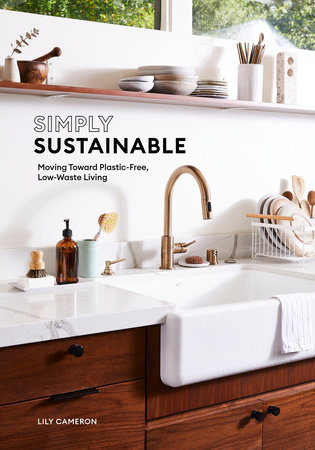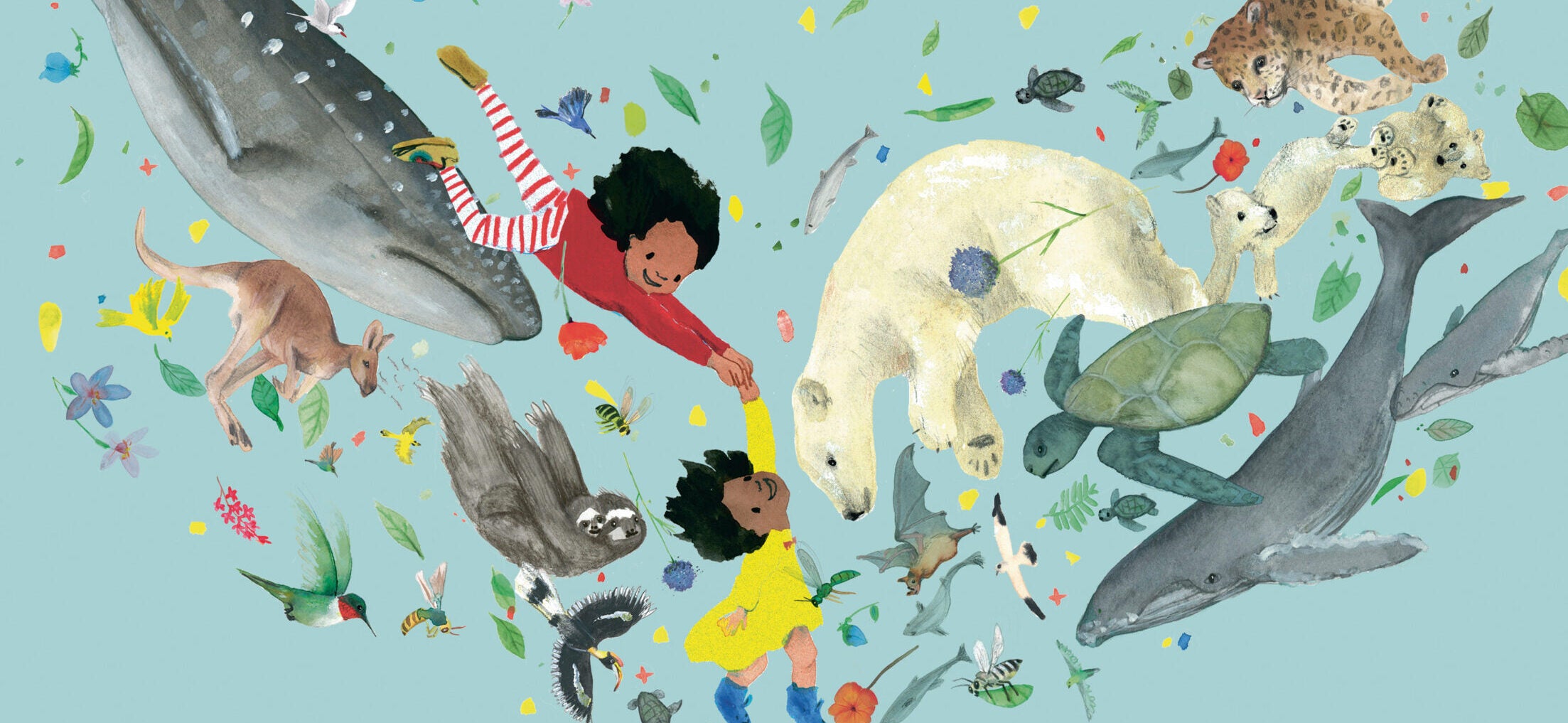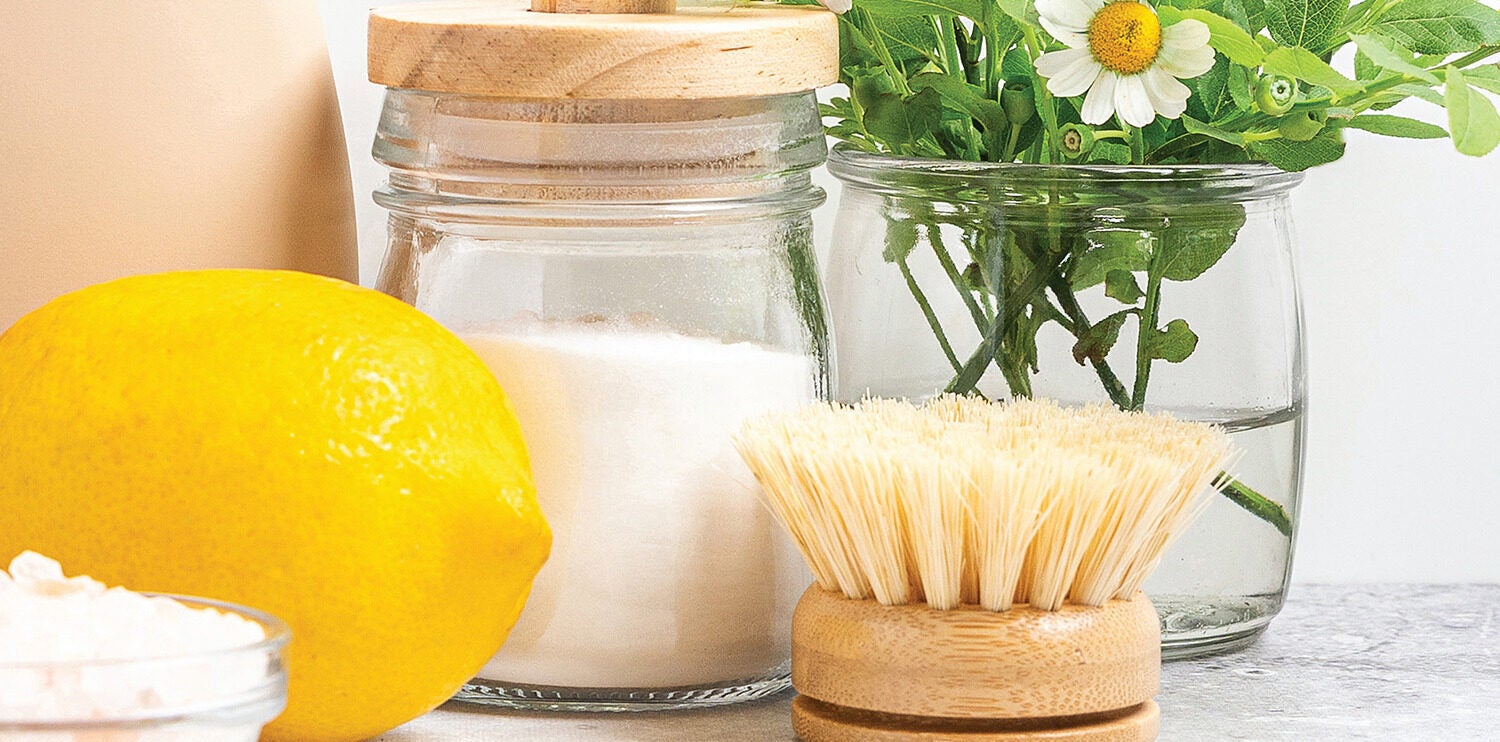Chapter 1Going Plastic-free(ish) I never considered myself part of the plastic problem. I grew up in California, the land of hippies and tree huggers, and my parents bought groceries in reusable totes long before plastic bag bans. I knew littering was wrong and recycling was good, and we even had an outdoor compost pile for kitchen scraps.
As an adult, I felt good about my environmental efforts. After graduating from the University of California, Berkeley, I landed a job managing public relations for clean technology startups in the solar, energy storage, and water purification industries. I also rode public transportation to work or walked, ate a vegetarian diet, and lobbied my landlord to add a compost bin to our building. I knew climate change was a serious issue and scoffed at the drivers of gas-guzzling SUVs.
It wasn’t until I read about the zero-waste movement that I realized I could be doing better (like, a
lot). I learned about a no-nonsense French woman, Bea Johnson, who fit an entire year’s worth of her family’s trash into a single 8-ounce Le Parfait jar. Seeing how little waste she produced made me reflect on my lifestyle, and when I looked closer, I didn’t like what I saw.
My fridge was filled with premade salads in plastic clam-shells, foam take-out containers, and leftover bits of produce and cheese bundled in plastic wrap. I loved shopping and my closet was overflowing with fast fashion that I replaced often. My bathroom drawers and shower were littered with expensive shampoos, serums, and other fancy products that promised flawless skin and long shiny hair. I guzzled lattes from a disposable to-go cup the size of my head each morning on my way to work.
Could I really call myself an environmentalist while stuffing massive garbage bags in the bin each week? Learning about the zero-waste movement was my wake-up call, and I was determined to make the switch to a plastic-free lifestyle. My fiancé and I had just returned from a three-month road trip where we backpacked through the Pacific Northwest and decided it was the perfect time to quit plastic cold turkey. I couldn’t wait to fit an entire year’s worth of trash into a Mason jar.
I used up the last roll of paper towels and replaced it with reusable cloth rags. I switched from enormous to-go cups of coffee to loose-leaf tea bought in bulk and brewed at home (after discovering coffee made my skin break out). I found a body wash that could double as a shampoo and bought refills at a natural foods co-op with my own glass jar. I scoured the San Francisco Bay Area for ingredients to make toothpaste, lotion, and sunscreen from scratch.
Minimalism, a skill I developed while backpacking, became an incredibly helpful method for reducing waste. My home had become cluttered and disorganized after years of moving around the Bay Area. I was a sucker for kitschy decor and vintage clothing from flea markets and thrift stores (which I thought were a bargain), but in reality, they took up valuable space, money, and the time required to care for these items. Purging unused belongings helped reset my consumption patterns and made me realize I often bought things out of boredom—not necessity. I became more cautious when making new purchases, investigating what materials each product was made from and how it would be disposed of at the end of its useful life.
With my newly minimal home and dedication to plastic-free living, my household garbage was shrinking, but I was also encountering some setbacks. For one, I couldn’t find many of the reusable products I was looking for to replace disposables, such as a wood dish brush and cloth produce bags, and when I bought them online, they were shipped with wasteful plastic packaging. And, although my garbage was decreasing, it was nowhere near being able to fit into a Mason jar. I was wracked with eco-guilt every time I made a misstep and starting to lose steam. Zero waste didn’t feel like fun; it felt like sacrifice and extra work.
My approach shifted after a yoga class (
I know, cliché), during which the instructor urged us not to compare our practice to other yogis around us. I realized that to make plastic-free living sustainable, I needed to focus on
my journey and stop measuring my progress against the seemingly perfect lifestyles shown on Instagram. To make it work for the long haul, zero waste needed to be adaptable and forgiving, especially when life threw me a curveball. I let go of the idea of squeezing my trash into a jar and started to focus on the wins—remembering to bring a reusable cup to my local cafe; successfully making All-Purpose Cleaner (page 97) from natural ingredients; and finding a plastic-free deodorant that actually worked.
This journey eventually led my husband and me to leave our corporate jobs to launch Wild Minimalist, a curated shop for zero-waste essentials with plastic-free shipping. Our family store has grown alongside the zero-waste movement and motivated me to share our journey on our blog, including tips, recipes, and the inevitable daily struggles.
While I am proud to participate in the zero-waste movement, I’ve also become more aware of its limitations and flaws. The trash jar has been an incredibly motivating symbol for many to reduce waste. For others, it’s intimidating, unrealistic, and at its worst, exclusionary. Having access to bulk groceries, cleaning, and beauty supplies, and being able to afford reusable replacements for disposable products is a privilege that not everyone shares. Many communities, especially communities of color (who bear the highest impacts of climate change), have been practicing resourcefulness and conservation for centuries, yet these same communities have been largely excluded from the environmental movement and zero-waste conversation. I believe it’s important to expand the definition and depictions of a zero-waste lifestyle in order to mobilize diverse participants, while also taking a critical look at the intersection of race and environmental issues (check out some recommended reading on page 201).
My goal with this book is to share the joy and beauty of living a
mostly plastic-free lifestyle, and to show there is no perfect one-size-fits-all approach. It’s virtually impossible to eliminate 100 percent of plastic from our lives, and there still may be some products or practices you’re not ready to part with, but with some preparation and a little mindfulness, you can drastically reduce waste and make your home more minimalist, inviting, and beautiful.
For the plastic-free movement to make a truly positive impact, we need a lot of people reducing waste imperfectly, not a handful of people fitting trash into a jar. So, if you’re like me—you care about the environment and want to curb plastic in a manageable (and fun) way—you’ve come to the right place.
Copyright © 2021 by Lily Cameron. All rights reserved. No part of this excerpt may be reproduced or reprinted without permission in writing from the publisher.







